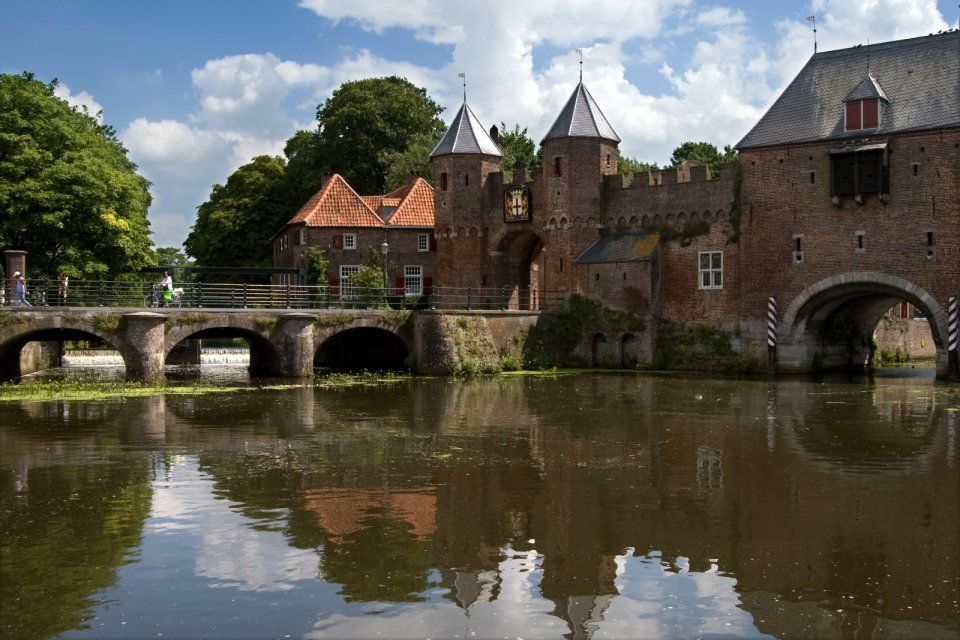This unique land and water gate dates back from c. 1400 and is part of the city’s second set of surrounding walls. Travellers could be allowed or refused to enter through this combined gate, even if they were travelling over water. In addition, the water levels in the inner city could be regulated with it. The gate has largely been preserved in its original state. The ‘treadmills’ are in the part of the gate that was built over the river Eem. These were operated by twelve prisoners treading the steps, setting in motion the windlass to lower the bulkhead, shutting off the river. In the front of the gate a wooden extension is visible, the so-called ‘mezenkouw’ (tit cage). From here, attackers could be harassed with hot oil or malt when they came too close to the water gate.


